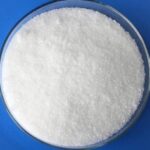 Sodium potassium pyrophosphate is a chemical compound with the formula Na2K2P2O7. It is a salt of pyrophosphoric acid, which contains two phosphorus atoms linked by an oxygen atom. Sodium potassium pyrophosphate is also known as potassium sodium diphosphate or tetrapotassium sodium diphosphate.
Sodium potassium pyrophosphate is a chemical compound with the formula Na2K2P2O7. It is a salt of pyrophosphoric acid, which contains two phosphorus atoms linked by an oxygen atom. Sodium potassium pyrophosphate is also known as potassium sodium diphosphate or tetrapotassium sodium diphosphate.
Sodium potassium pyrophosphate is a white, crystalline, water-soluble solid that has a variety of applications in different industries. It can act as a buffering agent, a chelating agent, an ionic dispersant, a sequestrant, a stabilizer, a thickener, and a leavening agent.
 Some of the uses of sodium potassium pyrophosphate are:
Some of the uses of sodium potassium pyrophosphate are:
In the food industry, it can be used as an additive to improve the texture, flavor, color, and shelf life of processed foods such as cheese, meat, seafood, bakery products, and beverages. It can also prevent the formation of crystals in canned fruits and vegetables. For example, it can help maintain the smoothness and creaminess of cheese products by preventing calcium from binding with casein proteins. It can also enhance the browning and crispiness of baked goods by reacting with baking soda to produce carbon dioxide gas.
In the dental industry, it can be used as an ingredient in toothpaste and mouthwash to prevent the buildup of plaque and tartar on teeth. It can also help whiten teeth by removing stains. For example, it can react with calcium and magnesium ions in saliva to form insoluble complexes that are easily removed by brushing. It can also act as a bleaching agent by oxidizing organic compounds that cause discoloration of teeth.
In the metal industry, it can be used as a component in electroplating solutions to enhance the deposition of metals such as copper, nickel, and zinc on various substrates. It can also be used as a corrosion inhibitor and a cleaner for metal surfaces. For example, it can form protective films on metal surfaces by complexing with metal ions and preventing their oxidation. It can also remove rust and scale from metal surfaces by dissolving them in acidic solutions.
In the textile industry, it can be used as a dispersant and a sequestering agent for dyeing and printing fabrics. It can also improve the softness and smoothness of fabrics by removing impurities and preventing the formation of scale. For example, it can prevent the precipitation of calcium carbonate and other minerals that can interfere with the dyeing process and affect the color quality of fabrics. It can also bind with metal ions that can cause fading or discoloration of fabrics.
In the ceramic industry, it can be used as a deflocculant and a binder for preparing ceramic slurry and molding ceramic products. It can also improve the strength and durability of ceramic products by reducing porosity and cracking. For example, it can lower the viscosity of ceramic slurry by dispersing clay particles and preventing their aggregation. It can also increase the green strength of ceramic products by forming cross-linked networks with clay particles and other additives.
Sodium potassium pyrophosphate is generally considered to be safe and biocompatible when used in appropriate amounts and conditions. However, excessive ingestion or inhalation of sodium potassium pyrophosphate may cause adverse effects such as nausea, vomiting, diarrhea, abdominal pain, headache, dizziness, convulsions, coma, and death. Therefore, it is advisable to follow the safety precautions and regulations when handling sodium potassium pyrophosphate.




